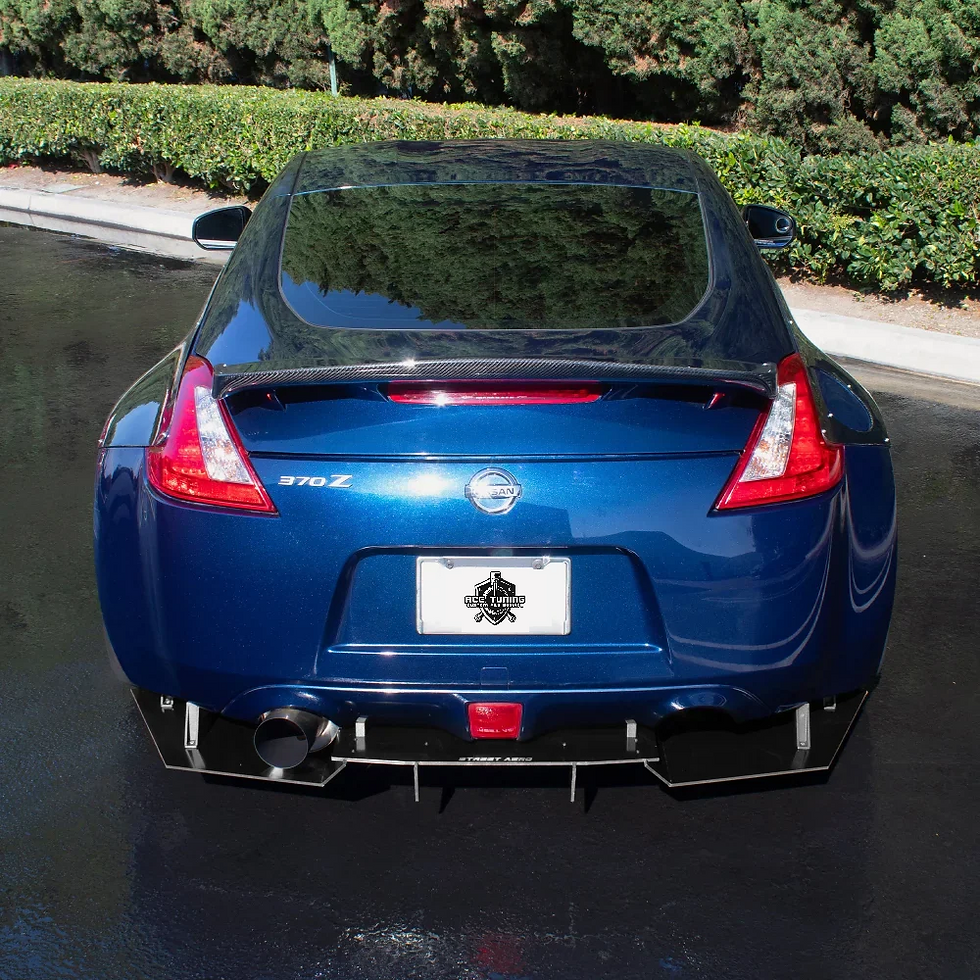A Beginner’s Guide to Using WinOLS for Tuning
- ACE TUNING

- Apr 28
- 4 min read
Tuning a vehicle's engine can significantly enhance performance and efficiency. Among the tools available for this task, WinOLS stands out as a powerful software for ECU (Engine Control Unit) mapping. In this guide, we'll explore how beginners can get started with WinOLS. You'll learn its features, installation process, and how to use it effectively for tuning.
WinOLS Tuning Overview
WinOLS is a sophisticated software used by professionals and enthusiasts alike for remapping engine parameters. It allows users to modify the binary files that control engine functions. By altering these files, you can optimize performance, improve fuel efficiency, or adjust the vehicle's characteristics to meet specific needs.
One of the primary reasons for using WinOLS is its ability to handle a variety of map formats and files. The software provides tools to visualize and edit maps, making it accessible for beginners, while still offering advanced functionality for seasoned users.

Getting Started with WinOLS Tuning
To begin tuning your vehicle with WinOLS, follow these steps:
Installation: Start by downloading WinOLS from its official website. Ensure your system meets the minimum requirements. The installation is straightforward, requiring you to follow the on-screen prompts.
Familiarize Yourself with the Interface: After installation, open WinOLS and take a moment to explore its interface. The layout includes various panels such as the project panel, maps panel, and the hex editor. Familiarity with these sections is crucial for effective tuning.
Loading a Binary File: You'll need to obtain the binary file from your vehicle's ECU. This process typically requires an OBD-II reader and the appropriate connection cables for your vehicle. Once you have the binary file, you can load it into WinOLS to start your tuning project.

Understanding ECU Maps
In WinOLS, the heart of tuning lies within ECU maps. Maps define how the engine operates under different conditions, controlling aspects like fuel injection, timing, and boost pressure. Understanding these maps is key to effective tuning.
Types of Maps
Fuel Maps: Control the amount of fuel injected at various engine loads and RPMs.
Ignition Maps: Define the timing of the spark to ensure optimal combustion.
Boost Maps: Manage turbocharger boost pressure to enhance performance.
Start by focusing on one map type, such as the fuel map, before moving on to others. Altering a single map can yield significant improvements in performance without overwhelming complications.
Basic Tuning Techniques
When you are ready to make adjustments, consider these basic tuning techniques:
Modify Fuel Maps: Start by slightly enriching or leaning out the fuel mixture in certain RPM ranges. Observe the car’s behavior, and use dinamometric testing to measure performance improvements.
Adjust Ignition Timing: Advancing ignition timing can provide more power, but be cautious. Too much advance can cause knocking and engine damage.
Optimize Boost: For turbocharged engines, increase the boost responsibly while monitoring engine parameters to prevent overboosting.
Testing and Validation
After making changes, it is essential to test the vehicle thoroughly. Use a dynamometer or road testing to evaluate the performance. Pay attention to any changes in fuel consumption, throttle response, and overall power delivery.

Resources for Further Learning
While this guide provides an overview of using WinOLS for vehicle tuning, additional resources are crucial for continuous improvement and learning.
Online Forums and Communities: Engage with other WinOLS users on forums. Websites such as ECU Tuning offer valuable insights and shared experiences.
Tutorials and Courses: Look for online courses or video tutorials dedicated to WinOLS tuning. These resources can help deepen your understanding and enhance your skills.
Documentation: The official WinOLS documentation provides detailed explanations of each feature and tool within the software.
Exploring WinOLS Tuning Files
As you gain experience, you might want to explore downloading pre-made maps or tuning files. Various services offer winols tuning files, which can save time and offer baseline configurations for your specific vehicle type. Just ensure that any files you download are from reputable sources and compatible with your engine.
Advanced Tuning Tips
Once you are comfortable with basic tuning, you can explore more advanced techniques such as:
Lambdas and AFR: Understanding and manipulating air-fuel ratios (AFR) can optimize performance and efficiency.
Data Logging: Use data logging tools to monitor real-time engine parameters. This information can guide your tuning adjustments.
Safety Parameters: Always have safety limits in place to prevent engine damage. Monitoring fixes such as overboost, high EGT (exhaust gas temperature), and knocking are critical.
By using these advanced techniques, you can take your tuning skills to the next level, ensuring a reliable and high-performing vehicle.
Final Thoughts on WinOLS Tuning
Using WinOLS for tuning can initially seem daunting, but with practice, it becomes straightforward and rewarding. Start with small changes, continually educate yourself on tuning strategies, and utilize community resources. As you grow more confident, you can delve deeper into advanced tuning methods to unlock the true potential of your vehicle.
Embark on your tuning journey with patience and attention to detail, and enjoy the improvements you can achieve with WinOLS. Happy tuning!



Comments